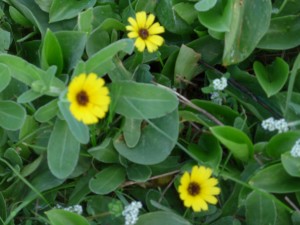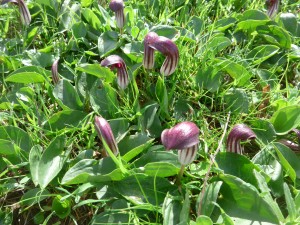Perhaps the saddest part of leaving Tangier was having to say goodbye to our neighbor across the street. He had a barber shop on the ground floor of his house, and he let Jeremy come over and sit in the barber’s chair and spin in circles and watch television with him. Jeremy even got to see a man shaved. Doesn’t get much better than that.
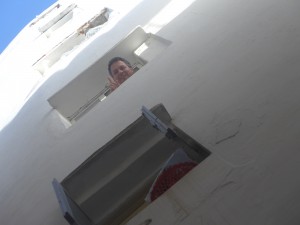
We drove out to the coast, to Cap Spartel, partly in honor of grandpa Loftus: an important maritime landmark!
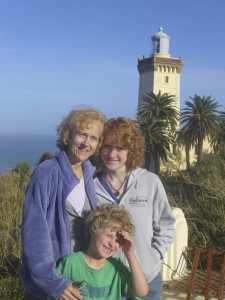
Just south of the lighthouse, we had a grand time scrambling over the rocks and watching the fisherman.
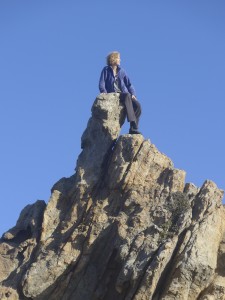
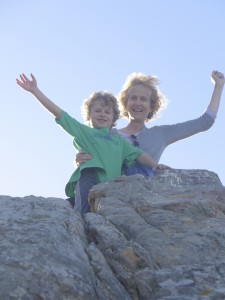
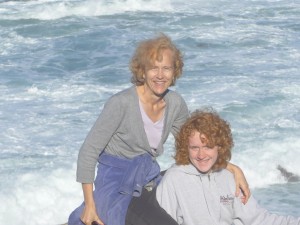
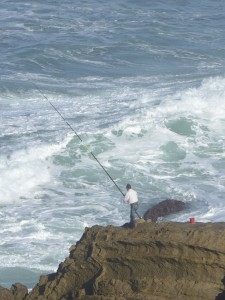
Then we went off in search of M’soura: really, a remarkable challenge. Off the motorway, then taking a midlevel road to an unmarked tiny road–paved, but not much more than a piste. We had to ask directions to get onto that road. Then we drove right past the site. We would have driven past it again, except that some kindly Moroccans led us to it–at which point, we almost didn’t believe them.
Some say that M’soura is the tomb of Antaeus, who wrestled with every comer until he was finally defeated by Hercules; every time Antaeus touched his mother, Earth, strength flowed into him. (His wife or consort was Tingis, the old name for Tangier.) According to Wikipedia, citing Plutarch, “when the Roman commander Quintus Sertorius crossed from Hispania to North Africa, he was told by the residents of Tangier […] that the gigantic remains of Antaeus would be found within a certain tumulus; digging it open, his men found giant bones; closing the site, Sertorius made propitiatory offerings and ‘helped to magnify the tomb’s reputation’.” This aerial view (from the museum in Tetouan) shows the tumulus, collapsed in the center, perhaps from the Roman excavation.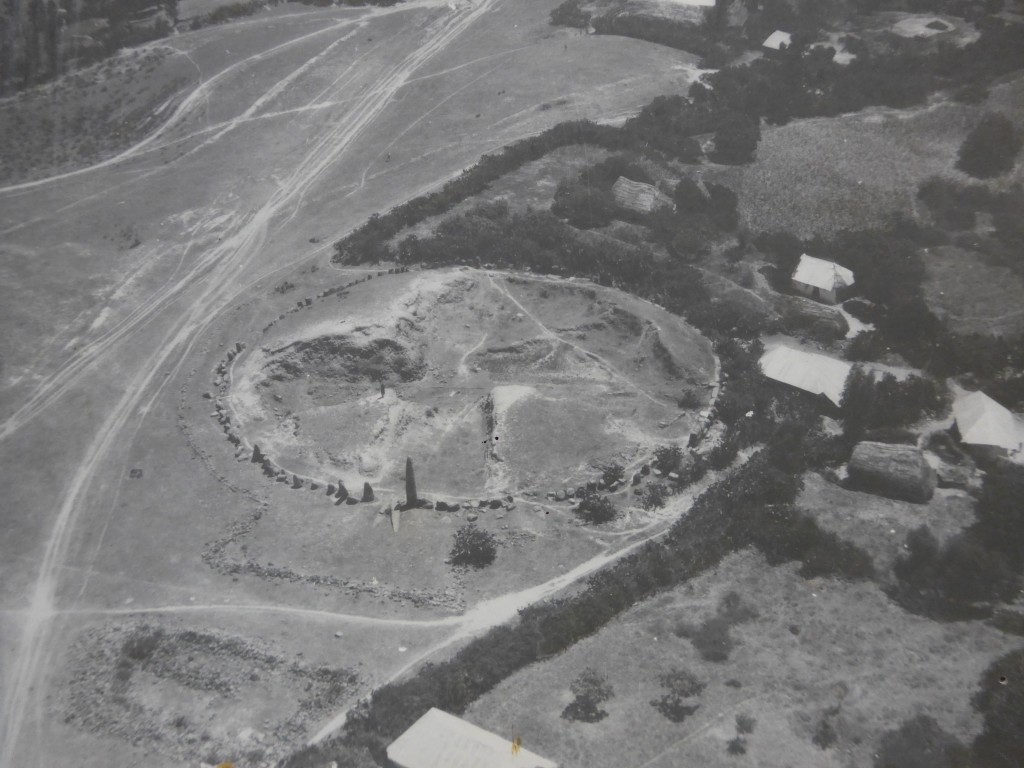
Even in that older photo, you can see the dwellings on the edge of the site. There’s quite a little village now, backing up onto the stone circle.
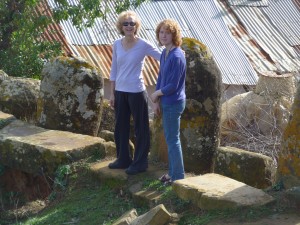
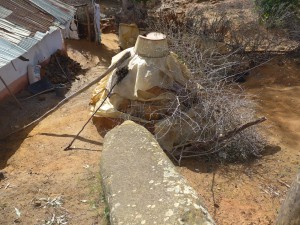
Zoë almost walked off into history. See her ghost figure separating out from her body?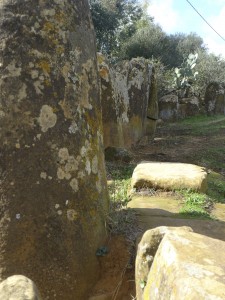
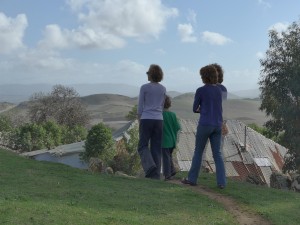
That’s the big stone behind us, l’kbir, with the collapsed cromlech in between. And the men (including a rather intrusive, or just overly helpful guardien) posed directly in front of l’kbir.
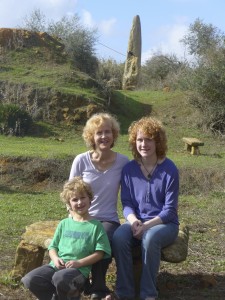
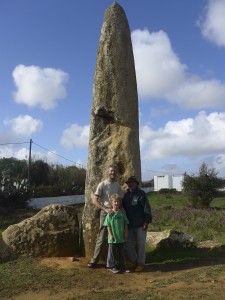
Can you say, “phallic”?
We couldn’t quite puzzle out this design on one of the stones.
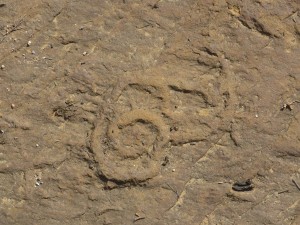
And the “bab” or door to the collapsed tumulus seemed more of a wish than a door.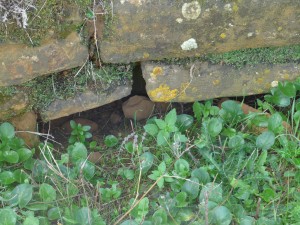
But I liked thinking of Antaeus here: still drawing strength from mother Earth, still springing back, ready for anything.
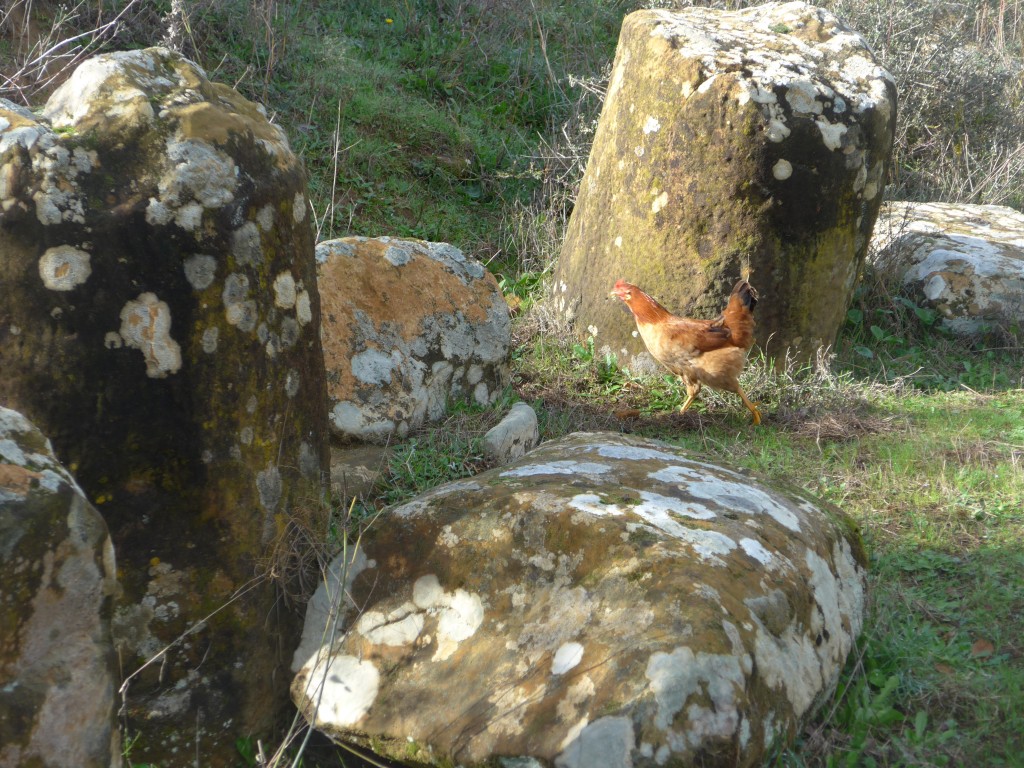
The spring flowers (in early January) and the lichen will surely keep Antaeus alive at least another year.
